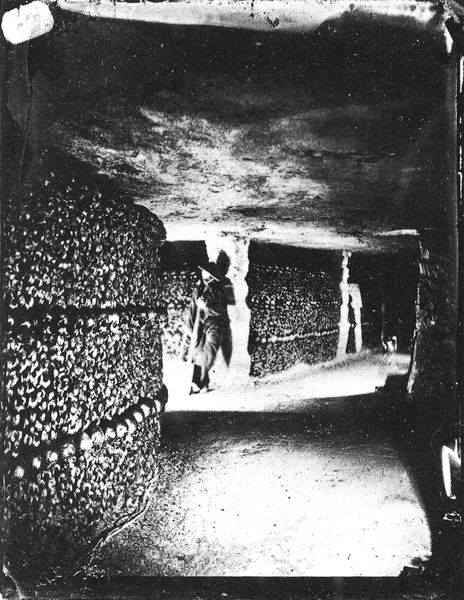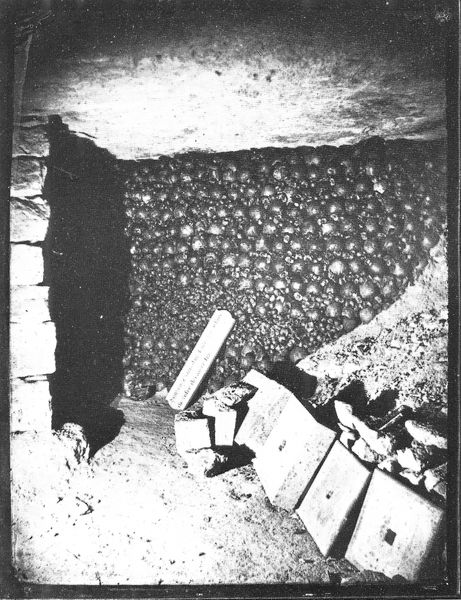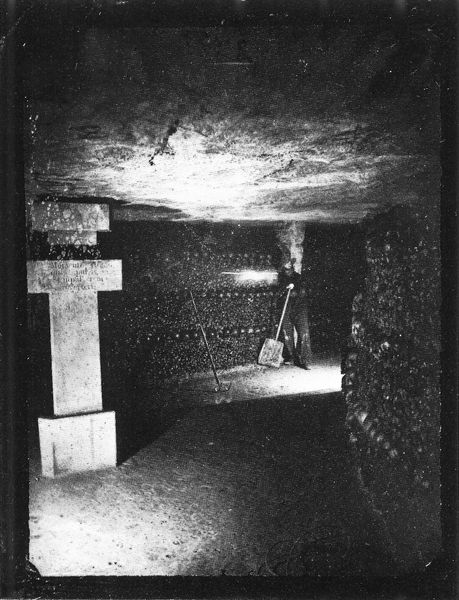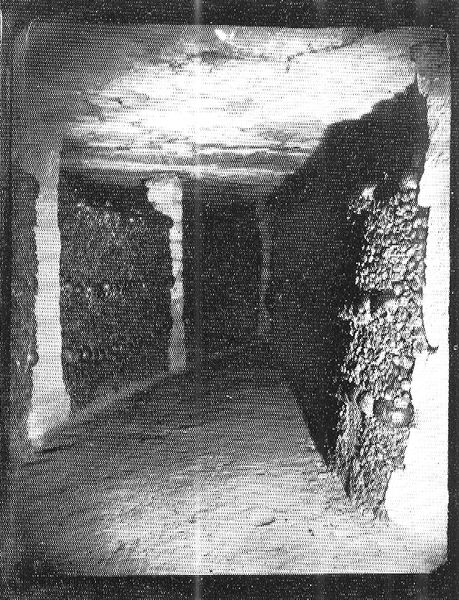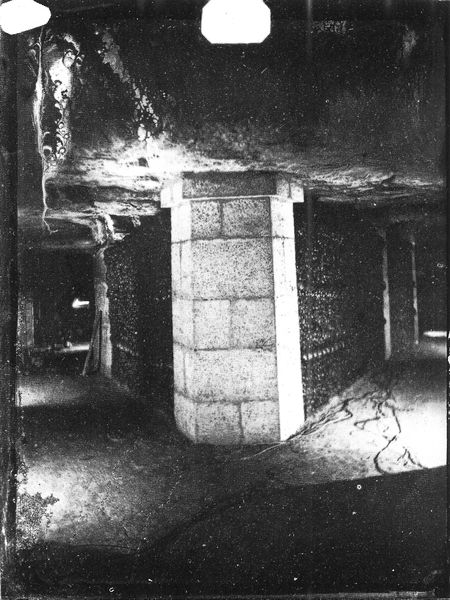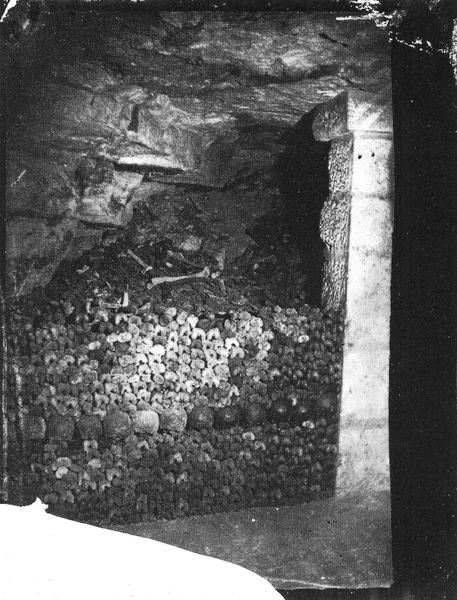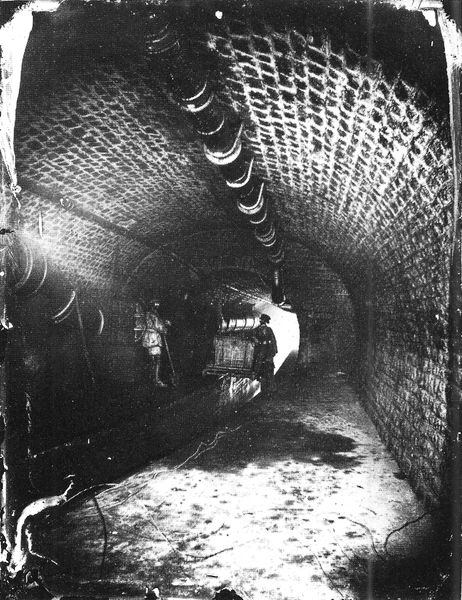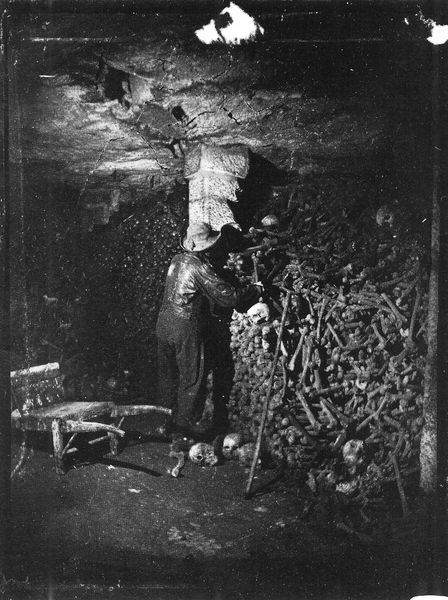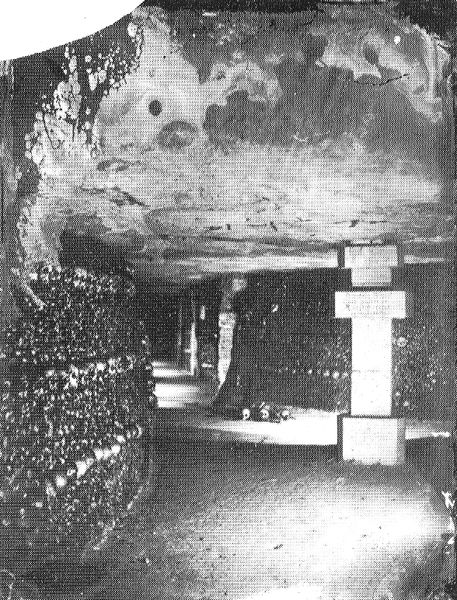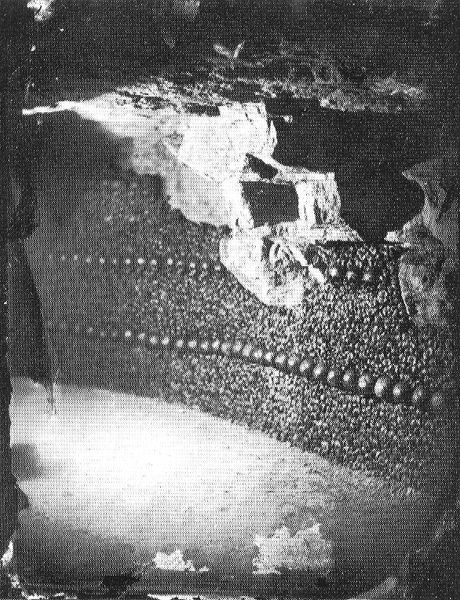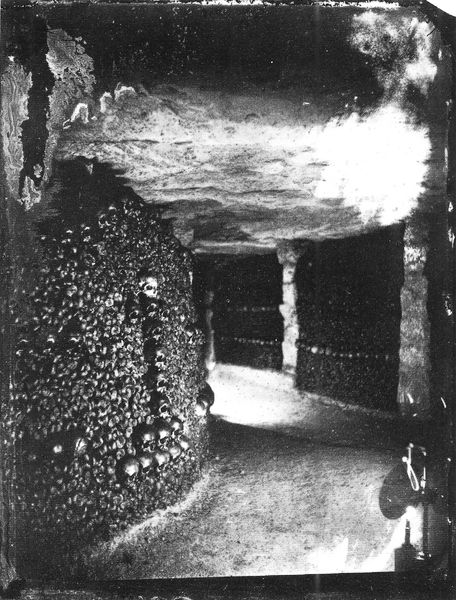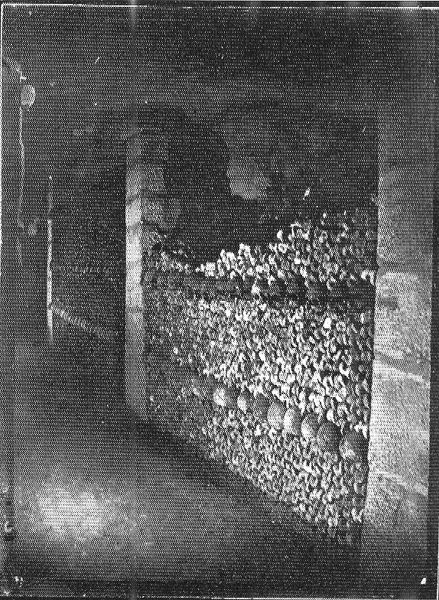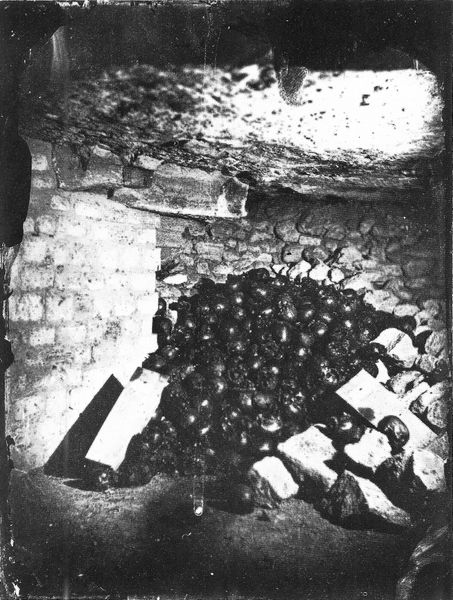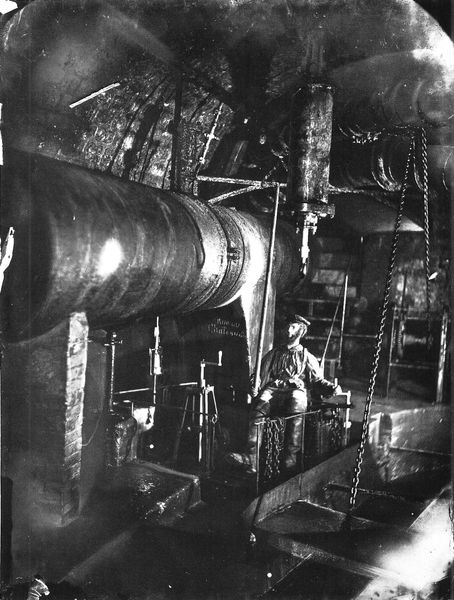
photography, gelatin-silver-print
#
black and white photography
#
landscape
#
black and white format
#
monochrome colours
#
warm monochrome
#
street-photography
#
b w
#
photography
#
black and white theme
#
black colour
#
black and white
#
gelatin-silver-print
#
monochrome photography
#
history-painting
#
monochrome
#
realism
Copyright: Public domain
Curator: Here we have a photograph titled "Catacombes de Paris" created in 1861 by Felix Nadar. The image has been produced as a gelatin silver print, presented in stark black and white. What are your immediate impressions? Editor: Claustrophobic, undeniably. The monochrome exaggerates the somber atmosphere, creating a dense visual field. The rough texture gives it a slightly unsettling effect. It feels like peering into the earth’s depths. Curator: That's certainly apt. Beyond the technical skill to take a picture inside catacombs illuminated only by torchlight, Nadar taps into primal fears about death and burial that are nearly universal. Editor: The composition guides our gaze. Notice the single figure occupying a prominent spot and leading into the depth of the image, dwarfed by a wall of skulls. The lines draw you into the shadows and recede in the distance. It really enhances that feeling of spatial restriction. Curator: Absolutely. Also the ladder, barely sketched by light in the dark background, gives us an understanding of verticality, so we perceive the space more as a pit than a cavern. We know now that catacombs often became a dumping place to reclaim lands once overcrowded churchyards began to spill. This creates powerful associations. Editor: True. The gelatin silver print further enhances the clarity and detail, making the skulls unnervingly visible and almost tangible. You can see light reflections dancing across surfaces in the foreground of the composition, despite the deep black around the subjects. Curator: The skull, a very ancient memento mori, transcends cultural context. Its hollow eye sockets confront us directly, like ancestors in collective consciousness reminding of us of our own ephemeral nature. Editor: And the lack of color focuses our attention solely on the form and arrangement of elements. This enhances the symbolic weight each individual thing. It gives them prominence that’s hard to ignore. Curator: For Nadar and viewers like us, photography could distill existential anxiety, offering something beyond sheer representation. The result is not simply a photographic representation but rather a document filled with evocative historical and cultural information. Editor: Exactly. It’s a powerful reminder how certain choices in framing, contrast, and material affect the feel and enduring message. Looking closely like this really brought that to life for me.
Comments
No comments
Be the first to comment and join the conversation on the ultimate creative platform.
